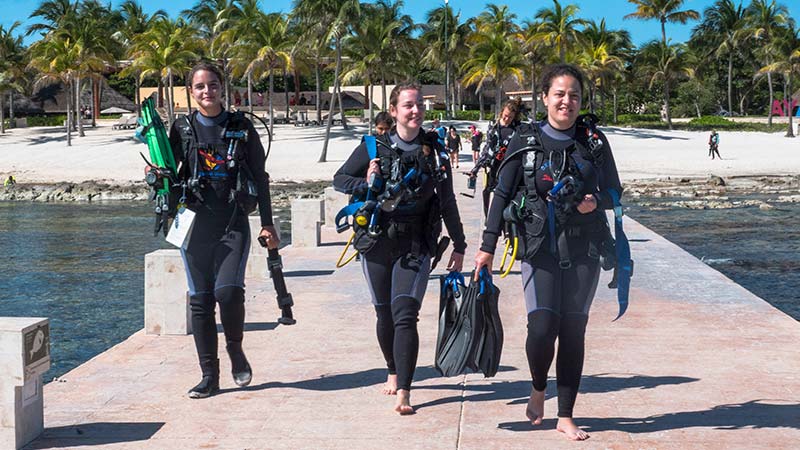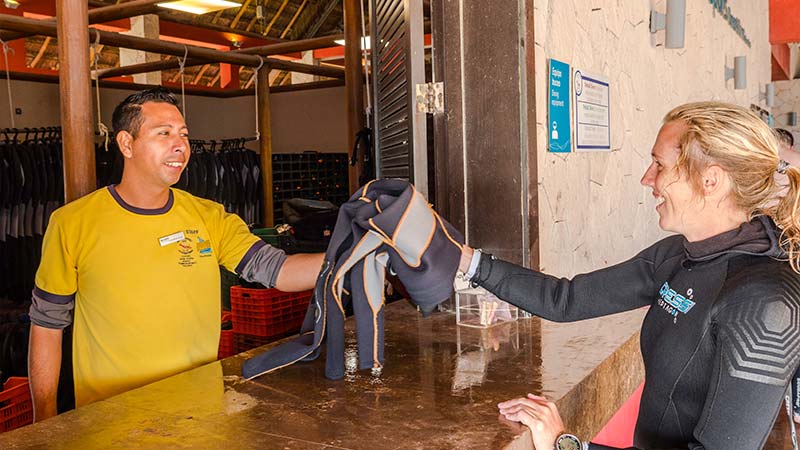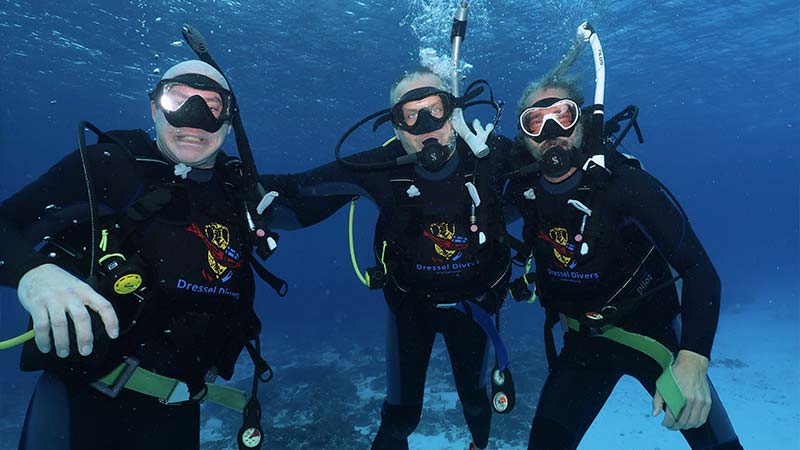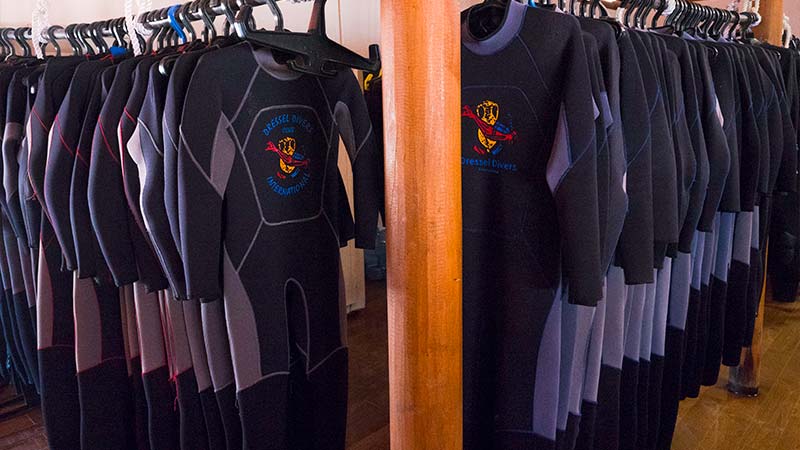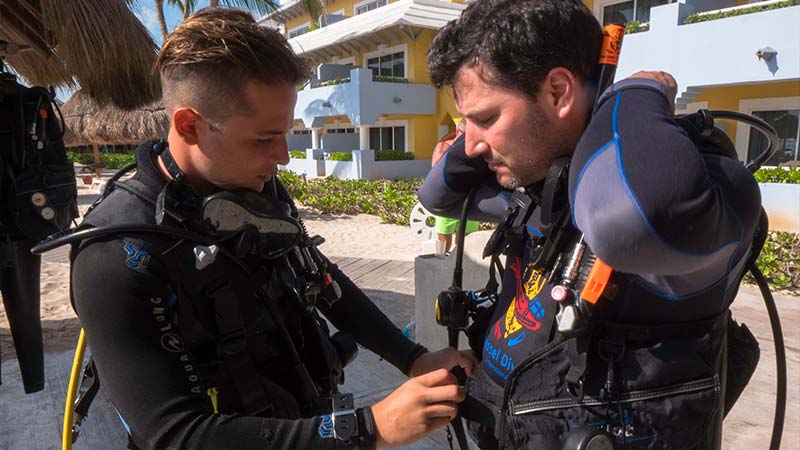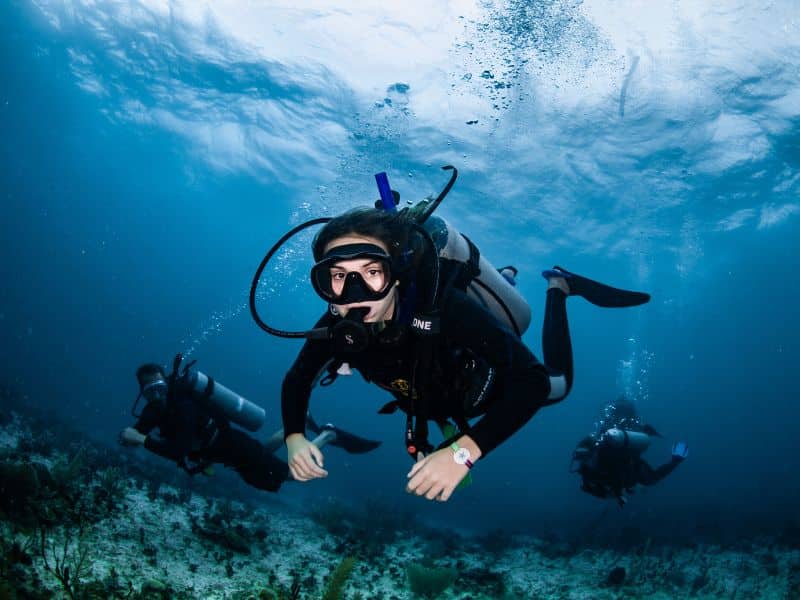6. Best Scuba Diving Suits 2026
Wet Suits (64–82°F / 18–28°C)
| Model |
Thickness |
Key Features |
Optimal Temperature |
| Aqualung Dynaflex |
5.5–7 mm |
Ultraspan™ super-stretch, double seals, G-Lock™ zipper |
19–28°C |
Semi-Dry Suits (61–75°F / 16–24°C)
| Model |
Thickness |
Material |
Features |
| Scubapro Nova Scotia |
7.5 mm |
X-Foam |
High insulation, watertight seals, flexible |
| Aqualung Iceland |
7 mm |
Standard neoprene |
Durable and affordable, ergonomic fit |
| Cressi ICE / Ice Lady |
7 mm |
Neoprene |
Gender-specific design, optimal seals |
Dry Suits (≤54°F / ≤12°C)
| Model |
Material |
Advantages |
Approx. Price |
| Apeks Thermiq Dry ADV |
Trilaminate |
Replaceable seals, Apeks valves, durable |
€1,699–2,099 |
| Mares XR3 |
Compressed neoprene |
High density, robust back zipper, durable |
€1,500–2,000 |
7. FAQS About Scuba Diving Suits
What is the difference between a wetsuit and a drysuit?
- Wetsuit: Insulates by trapping a thin layer of water against the skin.
- Drysuit: Keeps the diver completely dry, using air/gas for insulation.
What thickness should a wetsuit be for water temperatures of 78.8°F (26°C), like those in the Caribbean? Generally 3 mm for warm waters; 7 mm or more for cold waters of 21°C.
How do I properly size a scuba diving suit?
It should be snug to minimize water flushing, but not restrictive, especially around the neck and joints. Always check the manufacturer’s size chart.
Which materials are used in wetsuits?
Primarily neoprene, a synthetic rubber. Higher-end suits may use better quality or more flexible types like Super-Stretch Neoprene.
How do you clean and maintain a wetsuit?
Rinse with fresh water after every dive. Store dry and flat, or hang on a wide hanger; avoid direct sunlight.
Is a drysuit necessary for diving in the UK/Pacific Northwest?
Yes, for waters below ≈50°F (≈10°C), a drysuit is generally considered necessary for safety and comfort.
How much does a good quality scuba diving suit cost?
Varies widely. A decent wetsuit starts around $150–$400. Drysuits are more expensive, often $1,500+.
What Are Dressel Divers Wetsuits Like?
The diving suits you can rent at any of our bases in the Caribbean are full 1/8” 3mm suits. With them, heat loss is minimal on any regular dives we do. We use 3/16” 5 mm scuba diving suits for jumping into cenotes since the thermal sensation is somewhat colder inside these beautiful caverns.
We also have a large number of sizes ranging from X small to XXX large.
If you need more information about scuba diving suits, drop us a line. We will be happy to help you.




